The Squat - A Quick OverviewA Quick Overview of The SquatBy Bigger Faster Stronger Published: The Parallel Squat is the foundation for athletic excellence. The upper thigh must be parallel to the ground at the bottom of the squat to optimally develop leg and hip strength for speed and power. Parallel Squats are necessary in balancing development between the Hamstrings and Quadriceps. Image 1 - Place the bar on the shoulders, not the neck, and focus eyes straight ahead. Use an athletic stance, point toes out slightly for balance and keep the knees directly over the toes. Be tall, spread the chest and lock-in the lower back. Image 2 - Take a deep breath just before the downward movement. Hold your breath throughout the squat movement and breathe out on the way up, just after passing the half-way point. Image 3 - Use three spotters when possible. The back spotter controls balance and technique while the two side spotters judge the proper parallel depth. In addition, all spotters should coach and encourage the lifter. Image 4 - Box Squat: A top priority BFS Squat Variation to be used as a core lift. Do once a week with the Parallel Squat. Always sit down under control with a locked-in lower back. Rock back slightly, then surge forward and up on toes. Image 5 - Front Squat: A top priority BFS Squat Variation. Develops balance and particularly the lower inside portion of the quadriceps. Do once a week with the Parallel Squat. Always be tall, spread the chest and lock-in the lower back. |
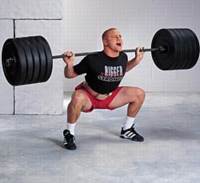 |
|
The Squat |
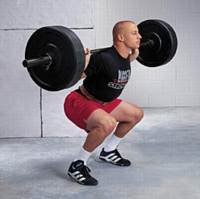 |
|
Image 1 |
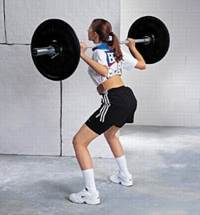 |
|
Image 2 |
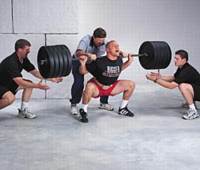 |
|
Image 3 |
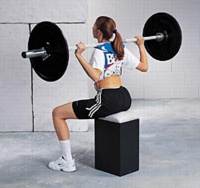 |
|
Image 4 |
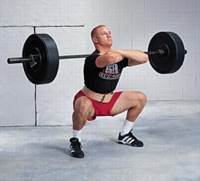 |
|
Image 5 |